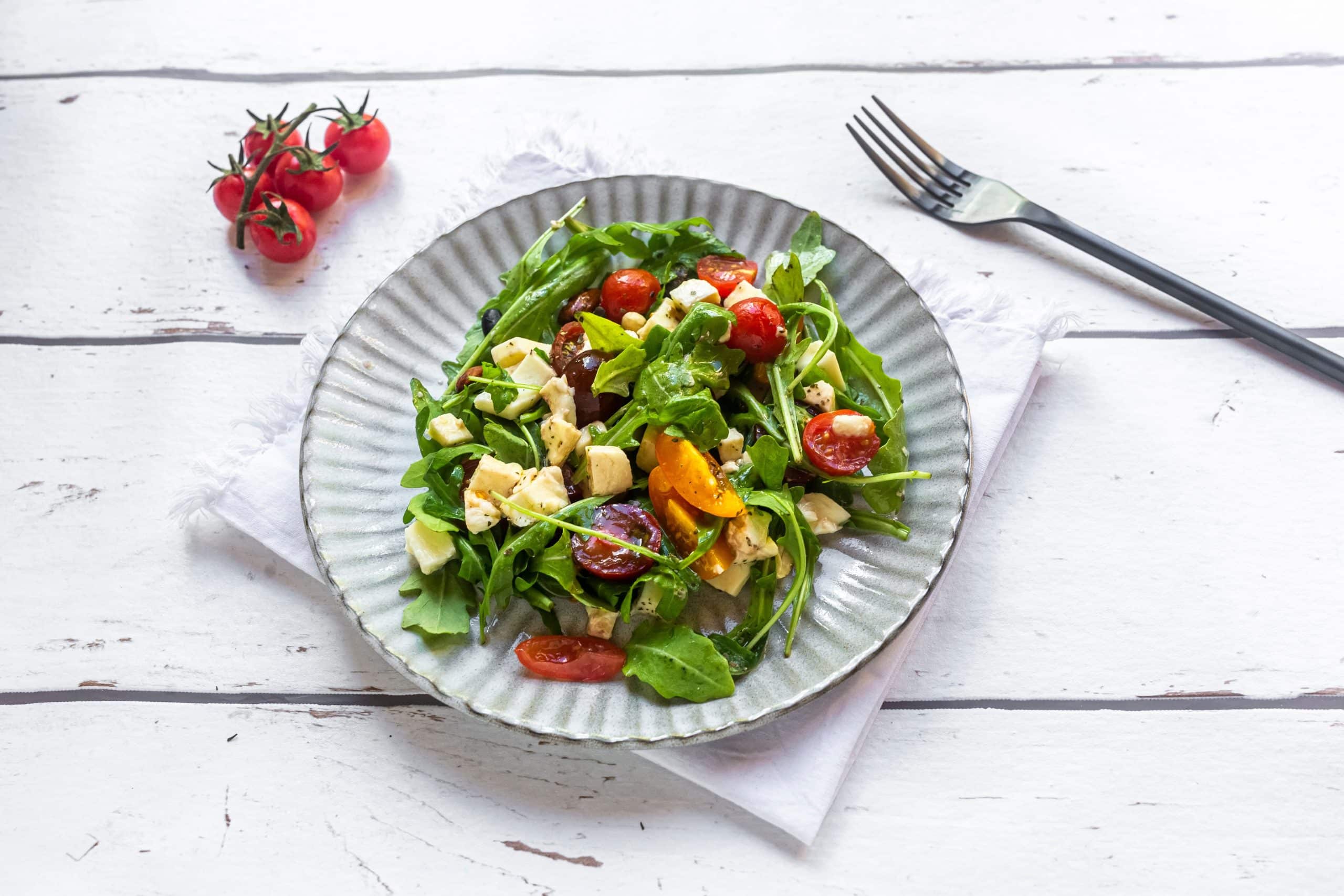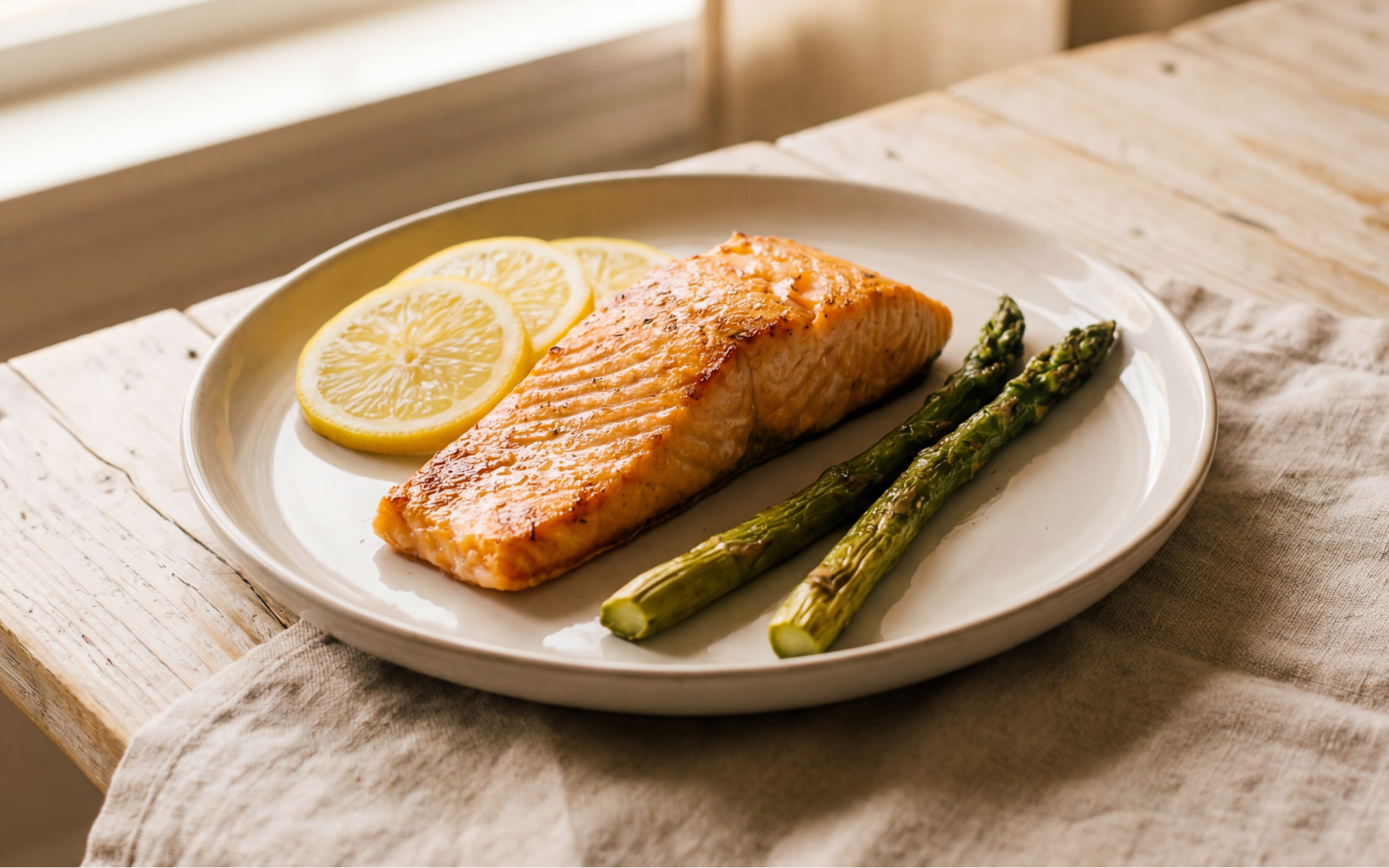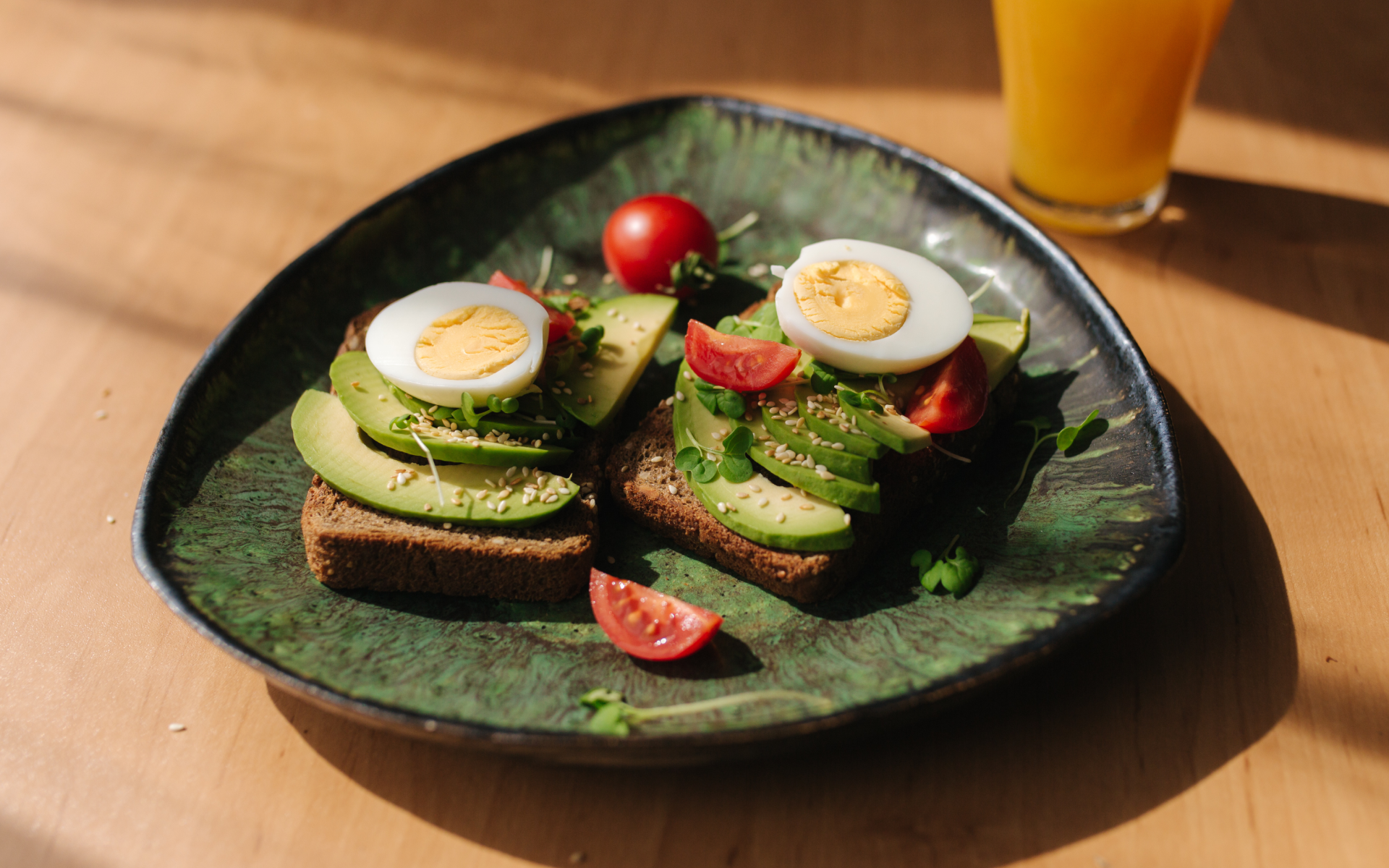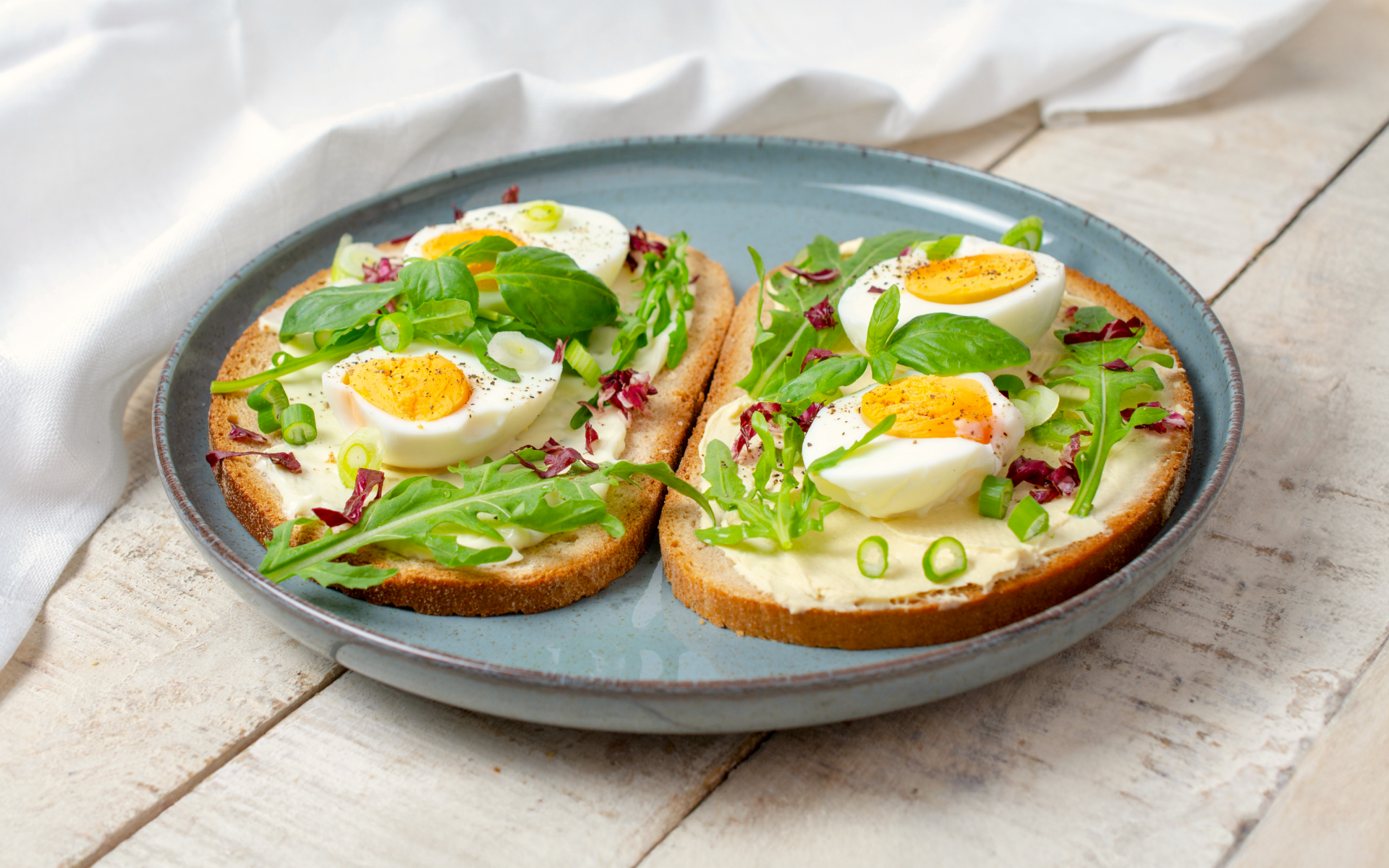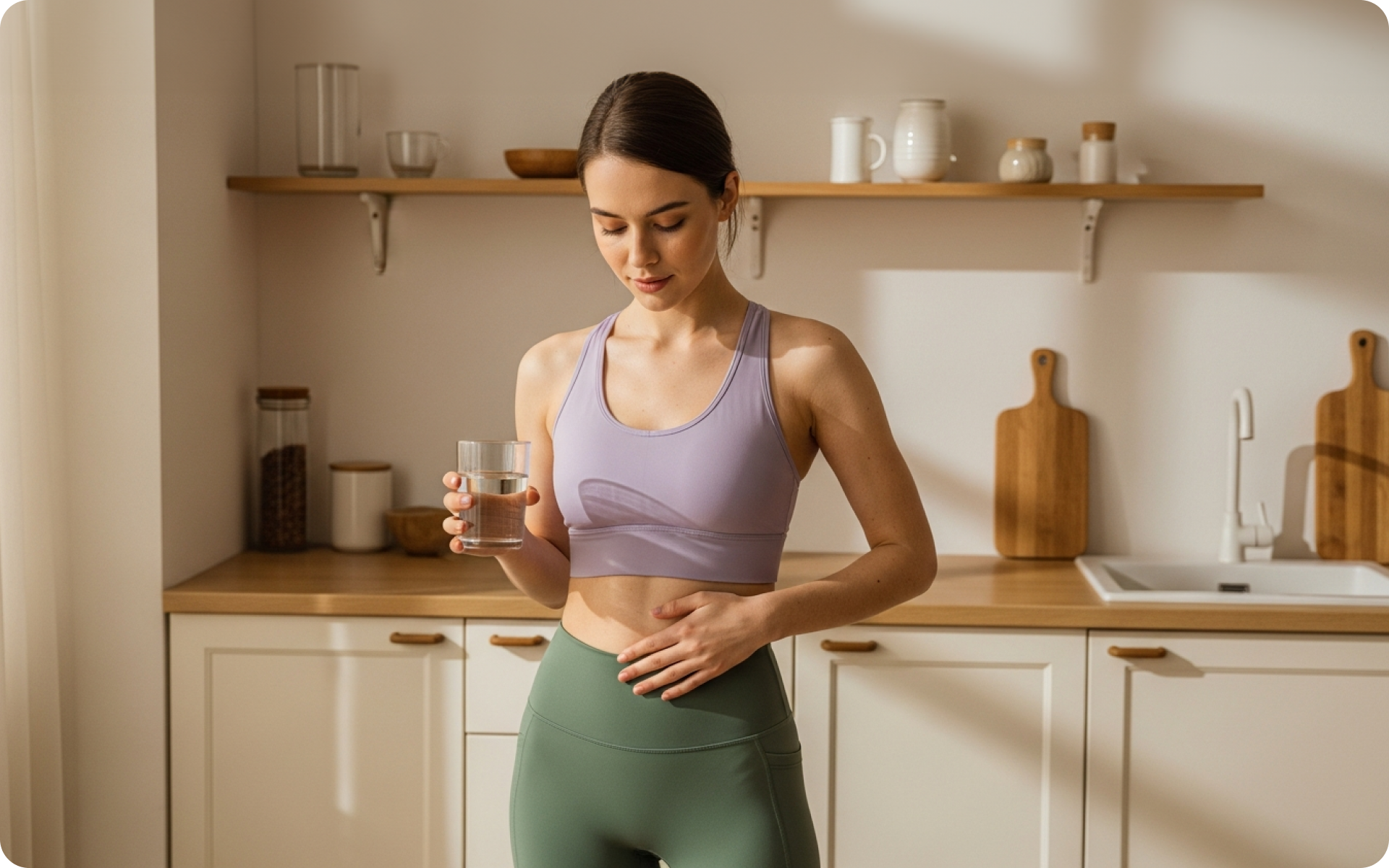Low carbohydrate diets have been all the rage the last couple of years. Research, as well as postings by those who indulge in these eating plans, claim that such diets not only help with weight loss and management, but they can also improve your heart health and cardiovascular health (10, 9).
To remain on a low carb diet and not undereat, many replace the eliminated carbohydrate sources with protein, specifically animal protein and some healthy fats. But what happens if you are vegetarian and cannot consume animal protein? How can you still eat low-carb?
If you’ve been trying to cook some high protein low-carb vegetarian dinner recipes and have not been able to figure out just how to keep the carbohydrate intake down, read on for some delicious yet low carb vegetarian meals and recipes.
Is There Such A Thing As A Low Carb Vegetarian Diet?
Yes, there is. A thing to remember is that not all vegetarians are the same or eat the same things. The main types of vegetarians that you may come across include (15)
- Lacto-vegetarians – Those in this subsection of vegetarians do not eat meat, seafood and eggs, but include dairy foods and plant foods.
- Ovo-vegetarians – These people do not eat meat, seafood and dairy foods, but include eggs and plant foods in their diets
- Ovo-lacto vegetarians are a combination of the ovo and lacto-vegetarians who exclude meat, fish and their respective subproducts from their diet but eat milk and eggs.
- Vegans – They practice the most extreme type of vegetarianism. Vegans do not consume any animal foods – including honey – and their diet is made up of exclusively plant foods
- Pecatarians – The main difference between ovo-lacto vegetarians and pescatarians is that the latter add fish and seafood to their diets but wholly avoid meat from land-based animals. Some pescatarians consume eggs and dairy while others do not.
Based on these types, we can see that depending on the kind of vegetarian meal plan you follow, it can be rather easy to eat high protein and even low carb vegetarian meals.
Lean and toned up body isn’t just a far-fetched fantasy. Check out the BetterMe app and watch it propel your weight loss journey into high gear!
Can You Be Low-Carb And Vegan?
Yes, you can but you must realize that while being a low carb vegan is possible, your carb intake will not be as low as that of other kinds of vegetarians. Vegan low carb no meat meals rely a lot on plant protein like lentils, legumes, nuts and seeds, which are generally also high in carbs, albeit complex carbs.
Some protein sources for sources for vegans include:
- Tofu – made from coagulated soy milk which is then pressed into solid white blocks.
- Tempeh – made from soybeans that have been fermented and compacted into a firm, dense cake
- Seitan – Made from wheat gluten, it is often used as a plant-based meat substitute with people claiming that it mimics the texture of chicken
- Seeds like hemp, pumpkin, sunflower, chia and flax seeds among others
- Nuts like peanuts, almonds, pistachios, cashews, walnuts and many more
How Do Vegetarians Cut Down On Carbs?
They do so by avoiding high carb foods like grains and legumes and indulging in vegetarian low carb foods like leafy green vegetables, nuts, nut butters, and seeds, as well as low carb fruits, such as apples, blueberries, and strawberries.
Depending on the kind of vegetarian the person is, they can also increase their intake of fish, eggs, and unsweetened dairy products, including plain whole milk and plain Greek yogurt – to fill the void left by the reduced carb intake.
Here are some examples of what this may look like –
Low Carb Meatless Monday Recipes
Low carb no meat meals are perfect for vegans as well as other types of vegetarians who want to try a full meal day that doesn’t have any animal products included:
Meal 1 – Curry Tofu Scramble
Ingredients
- 1 block extra firm tofu crumbled (about 14 oz/400g)
- 1 diced medium-sized red onion
- 3 minced garlic cloves
- 1 diced medium-sized tomato diced
- 8 sliced button mushroom
- 1 tbsp curry powder
- salt to taste
Instructions
- Crumble up your tofu into small pieces using either your hands or a fork
- Heat up a tablespoon of oil in a non-stick skillet. Once the pan is heated, place in onion and saute for about 3 minutes or until translucent. Stir in garlic and cook for another 1 minute
- Add in your mushrooms and tomato then continue cooking for another 2 to 3 minutes, or until veggies are partially cooked.
- Toss in the tofu along with curry powder and salt. Stir until everything is well combined and cook for an additional 3 to 4 minutes while stirring frequently.
- Take off the heat, serve and enjoy!
This recipe makes 3 servings (13)
Calories for 1 serving: 117 calories. Fats: 3g. Protein: 13 g. Carbs: 12 g
Read more: The Vegetarian Intermittent Fasting Guide to Plant-Based Fasting and Feasting
Meal 2 – Kiwi Chia Pudding
Ingredients
- 3 tbsp chia seeds
- 1 cup almond milk
- 1 tbsp maple syrup
- 1 tsp pure vanilla extract
- 1 cup diced kiwi
- 1 tbsp coconut flakes
- Coconut flakes and berries of choice for topping (optional)
Instructions
- In a medium-sized bowl, combine the chia seeds and almond milk then stir very well to avoid any chunks.
- Add the maple syrup and vanilla extract. Mix everything very well till everything is combined.
- Using a plastic wrap, cover the bowl and refrigerate for about 4 to 5 hours. If you can, leave this overnight for the best results
- When the chia pudding is ready to be served, puree the kiwi in a food processor/blender.
- Mix the pureed kiwi and chia pudding together.
- Top with coconut flakes and berries
This makes 2 servings
Calories for 1 serving: 218. Fats: 10g. Protein: 5 g. Carbs: 29 g
Meal 3 – Pad Thai with Spicy Peanut Sauce
Ingredients for the Pad Thai
- 2 zucchinis
- 1 yellow squash
- 1 medium carrot
- 1 red bell pepper
- ½ cup shredded red cabbage (35 g)
- ½ cup mung bean sprouts (50 g)
- 2 sliced green onions
- 2 tbsp finely chopped fresh cilantro chopped
- 2 tbsp cashews
- 1 lime, cut into wedges
Ingredients for the sauce
- 2 tbsp natural peanut butter
- 2 tbsp soy sauce
- 2 tbsp lime or lemon juice
- 2 tsp grated ginger
- 2 garlic cloves
- 3 pitted dates
- ½ tsp cayenne or red chili flakes
- ½ cup water (120 ml)
Instructions
- Add all sauce ingredients to a blender and blend till everything is combined. Set aside
- Spiralize the zucchini, squash and carrots, then slice your bell pepper and red cabbage thus making some veggie noodles.
- Take your veggie noodles and transfer them into a large enough bowl. Pour out your spicy sauce on to the veggies and toss till they are coated in the sauce
- Top the salad with green onion, sprouts, fresh cilantro, cashews and lime.
- Serve and enjoy
Ps. if you are also looking to try some no sugar vegetarian recipes, ensure that your peanut butter is natural with no added sugars.
This makes 2 servings (3)
Calories for 1 serving: 326. Fats: 14g. Protein: 14 g. Carbs: 46 g
Meal 4 – Tofu Cabbage Bowl In Almond Butter Sauce
Ingredients – For the Tofu
- 350 g package firm or extra-firm tofu
- 2 tbsp soy sauce
- 1 tsp garlic powder
- 1 tbsp arrowroot powder or cornstarch
- pinch of black pepper
Ingredients almond butter sauce
- 4 tbsp (60 g) almond butter
- 2 tbsp soy sauce
- 1 tbsp rice wine vinegar
- 2 tsp Sriracha sauce
- 4 tbsp unsweetened plant milk (cashew, almond or coconut)
- pinch of stevia, a few drops liquid stevia or 1 tbsp maple syrup
- salt and pepper
Ingredients for the Cabbage ‘rice’
- 1 small riced green cabbage
- 1 tsp coconut oil
- ½ cup lightly packed chopped green onion
- ½ cup lightly packed chopped fresh cilantro
- 3 minced garlic cloves
For the veggie base
- 1 to 2 avocados (¼ –½ per bowl)
- 4 cups broccoli florets, steamed (1 cup per bowl)
- 4 cups finely chopped kale, steamed or massaged (1 cup per bowl)
Instructions
- In a bowl, whisk all you sauce ingredients till combined and smooth
- Press the tofu to get rid of excess water and then cut into cubes. Place tofu in a bowl and combine with the other ingredients. Pour this on to a lined baking tray and bake in a 425° F oven for 20 minutes. Flip the cubes and bake for another 10 to 20 minutes
- Rice the cabbage in a food processor or simply finely shred it with a sharp knife. In a large skillet, add your oil, cilantro, green onion and cabbage. Cook everything over high until until tender and brown, about 6-10 minutes
- On a different burner quickly steam your cabbage over a pot of boiling water. 5 minutes tops.
- Take the kale off the stems, chop them up and them massage them with 1 tbsp of olive oil till dark green
- To serve, scoop the cabbage rice into your bowl, add the kale, broccoli, avocado and tofu, then finally top with the sauce.
This makes 4 servings (11)
Calories for 1 serving: 423. Fats: 27 g. Protein: 23 g. Carbs: 30 g
Looking for a way to break the vicious cycle of weight loss and tone up all the jiggly parts? Watch the extra pounds fly off and your muscles firm up with the BetterMe app!
Meal 5 – Ratatouille
Ingredients
- 2 large aubergines
- 4 small courgettes
- 2 red or yellow peppers
- 4 large ripe tomatoes
- 5 tbsp olive oil
- A small bunch of basil
- 1 medium-sized onion, peeled and thinly sliced
- 3 peeled and crushed garlic cloves
- 1 tbsp red wine vinegar
- 1 tsp sugar (any kind)
Instructions
- Clean the aubergines and courgettes into bite sized chunks
- Remove stalks, seeds and membranes from the peppers and then cut them into bite sized chunks.
- Boil some water in a pan. Cut a small cross on the base of each tomato. Place the tomatoes in a heat proof bowl and pour the boiling water over them. Let them cool, peel off the skin and quarter each tomato. Scrape away the seeds with a spoon then roughly chop them
- Heat some oil in a pan and brown the sides of all your aubergines, courgettes and peppers. Make sure not to overcook them. Put all the vegetables aside
- In the same pan, cook the onion till translucent, add the crushed garlic and fry till fragrant. Stir in 1 tbsp red wine vinegar and 1 tsp sugar, then tip in the tomatoes and half the basil.
- Put the vegetables back in the pan, add some salt and pepper to taste, stir to combine and leave to cook for 5 minutes
- Remove from heat, top with basil and serve
Can be served with some cauliflower if desired. This makes 4 servings (12)
Calories for 1 serving: 261. calories. Fats: 15 g. Protein: 6 g. Carbs: 19 g
Low carb vegetarian ready meals, sold at grocery stores can also be an alternative meal option for anyone who does not want to cook. Just make sure to read the nutritional info on the package to ensure that the meals are healthy
What Are The Best Low Carb Diabetic Vegetarian Meals?
According to research, vegetarianism and other plant based diets can help with the prevention and even the treatment of diabetes – specifically type 2 diabetes.
The studies state that these plant-based diets that emphasize the consumption of legumes, whole grains, vegetables, fruits, nuts, and seeds and discourage most or all animal products are not only inversely associated with risk of developing diabetes but also have therapeutic effects on those suffering from Type 2 diabetes (14, 1).
In diabetes management, glycemic index (GI) matters as it helps show how fast, moderately or slow food raises your blood sugar levels. If you have diabetes, consuming foods with a high glycemic index can make your blood glucose rise too quickly which makes it harder to manage the illness (7).
The best foods to use in your low GI dinner recipes vegetarian meal plan would include
Foods with very little to no carbs:
- Fish and seafood: including salmon, trout, tuna, sardines, and prawns
- Fats and oil from olive oil, vegetable oils, butter and avocados
- Nuts like almonds, cashews, pistachios, walnuts, and macadamia nuts
- Dairy and dairy products like milk, cheese, and yogurt
- Dairy replacements such as coconut milk, soy milk, almond milk
- Leafy greens and vegetables like carrots, broccoli, cauliflower, celery, zucchini, and more
- Fruits, including but not limited to apples, strawberries, apricots, peaches, plums, pears, kiwi, and tomatoes.
Other foods like starchy vegetables which include orange sweet potatoes, corn, yams, and winter squash, legumes and lentils like, chickpeas, baked beans, butter beans, kidney beans, and more as well as grains such as quinoa, barley, pearl couscous, buckwheat, freekeh, semolina, are all considered low gi.
However, if you are trying to keep your diet low carb, you may want to avoid or limit your intake of these.
What Are Some Zinc-Rich Foods For Vegetarians?
A study review published in the Journal of the Science of Food and Agriculture in 2013 revealed that people who as well as societies that primarily consume a vegetarian diet tend to consume less zinc than those who are non vegetarian (4).
To avoid having lower than normal zinc intake or concentration in your body, you are advised to always include the following zinc rich foods in your vegetarian diet
- Seafood like crab, oysters, shrimp, mussels and and lobsters
- Chickpeas and other legumes like beans as well as lentils
- Nuts and seeds like cashews, pine nuts, almonds and peanuts as wells as hemp, pumpkin, squash, and sesame seeds
- Tofu
- Dairy products like milk and cheese
- Eggs
- Whole grains like wheat, quinoa, rice, and oats
- Vegetables like kale and green beans.
Remember the type of vegan you are determines what you can and cannot eat on this list so pick and choose as required.
What Are Some Vegetarian Snacks With Protein?
Healthy and protein rich vegetarian snacks can include boiled eggs, roasted chickpeas, greek yogurt, trail mix with nuts and seeds, hummus, protein smoothie (made with whey or plant protein), chia pudding, etc.
Why Do Vegetarians Need Carbohydrates?
Whether you are eating a low carb diet or not, it is not advisable to fully eliminate carbs from your diet. A healthy diet is made up of 4 main food groups which are (8)
- Vegetables
- Fruits
- Grains
- Protein Foods
- Dairy
When you eliminate a food group, not only does your body lack what it needs for proper function, but you could also end up with a nutritional deficiency. Not only does consuming carbs help avoid this, but carbohydrates are the body’s main source of energy that supports bodily functions and physical activity (2).
Remember that while grains are the main source of carbs, you can also get this macronutrient from other sources such as fruits, legumes and lentils, starchy vegetables, and dairy.
Read more: Do Vegetarians Eat Fish
FAQs
How Do Vegetarians Stay Thin?
Vegetarians may generally be slimmer than people on other eating plans because such diets primarily focus on fruits, vegetables, whole grains, legumes, nuts, and seeds.
Such foods are rich in fiber, micronutrients, and beneficial plant compounds, and tend to be lower in calories, fat, and protein than animal foods. These foods also have a hand in increasing satiety which also helps in keeping your daily calorie intake low which helps with weight loss and management (5).
Why Does Cutting Down On Carbs Really Work?
Reducing your carb intake may help with weight loss due to 2 main reasons:
- Lowering your carb intake can help lower your overall calorie intake, putting you in a deficit which helps with weight loss
- Eating less carbs means your body lacks enough carbs to turn into glucose for energy. This makes it turn to burning your stored body fat, turning it into ketones which it then uses as an energy source. This too overtime, leads to fat and weight loss
How Can I Block Carbs?
You do not need to use carb blockers in an effort to prevent the absorption of carbohydrates, just to lose weight. Eating a low carb diet will help you lose the extra weight.
How To Bulk Up If You Are Trying to Gain Weight as a Vegetarian
Muscle grows through weight lifting and a higher intake of protein. If your version of vegetarianism allows milk, eggs or fish and seafood, lean into these and increase your intake of them. If you are vegan and consume no animal products or protein, eat more legumes, lentils, seitan, tofu, tempeh and nuts to increase your protein intake.
What are some Vitamin D Foods For Vegetarians?
Vegetarians can get their dietary vitamin D from fatty fish like salmon, mackerel, and sardines, fish liver oils, egg yolks, cheese, and mushrooms.
The Bottom Line
Low carb vegetarian meals are a good option for anyone looking to lose some extra weight or simply improve their heart health. If you choose to follow such a meal plan, please be sure that you are not eliminating carbs altogether and that you are eating enough calories everyday. Under eating or overeating are both not good for your health.
DISCLAIMER:
This article is intended for general informational purposes only and does not serve to address individual circumstances. It is not a substitute for professional advice or help and should not be relied on for making any kind of decision-making. Any action taken as a direct or indirect result of the information in this article is entirely at your own risk and is your sole responsibility.
BetterMe, its content staff, and its medical advisors accept no responsibility for inaccuracies, errors, misstatements, inconsistencies, or omissions and specifically disclaim any liability, loss or risk, personal, professional or otherwise, which may be incurred as a consequence, directly or indirectly, of the use and/or application of any content.
You should always seek the advice of your physician or other qualified health provider with any questions you may have regarding a medical condition or your specific situation. Never disregard professional medical advice or delay seeking it because of BetterMe content. If you suspect or think you may have a medical emergency, call your doctor.
SOURCES
- A plant-based diet for the prevention and treatment of type 2 diabetes (2017, ncbi.nlm.nih.gov)
- Carbohydrates (n.d., hsph.harvard.edu)
- Colorful Raw Vegan Pad Thai Salad (2022, nutriciously.com)
- Effect of vegetarian diets on zinc status: a systematic review and meta-analysis of studies in humans (2013, pubmed.ncbi.nlm.nih.gov)
- Effects of Plant-Based Diets on Weight Status: A Systematic Review (2020, ncbi.nlm.nih.gov)
- Environmental Impacts of Plant-Based Diets: How Does Organic Food Consumption Contribute to Environmental Sustainability? (2018, frontiersin.org)
- glycaemic index and diabetes (n.d., diabetes.org.uk)
- Healthy Eating As You Age: Know Your Food Groups (2022, nia.nih.gov)
- Low-Carbohydrate Diet (2023, ncbi.nlm.nih.gov)
- Low-Carbohydrate Diets (n.d., hsph.harvard.edu)
- LOW-CARB VEGAN DINNER BOWLS (2023, runningonrealfood.com)
- Ratatouille (n.d., bbcgoodfood.com)
- VEGAN CURRY TOFU SCRAMBLE (2021, myplantifulcooking.com)
- Vegetarian Diets and the Risk of Diabetes (2018, ncbi.nlm.nih.gov)
- Vegetarians: Past, Present, and Future Regarding Their Diet Quality and Nutritional Status (2023, ncbi.nlm.nih.gov)
